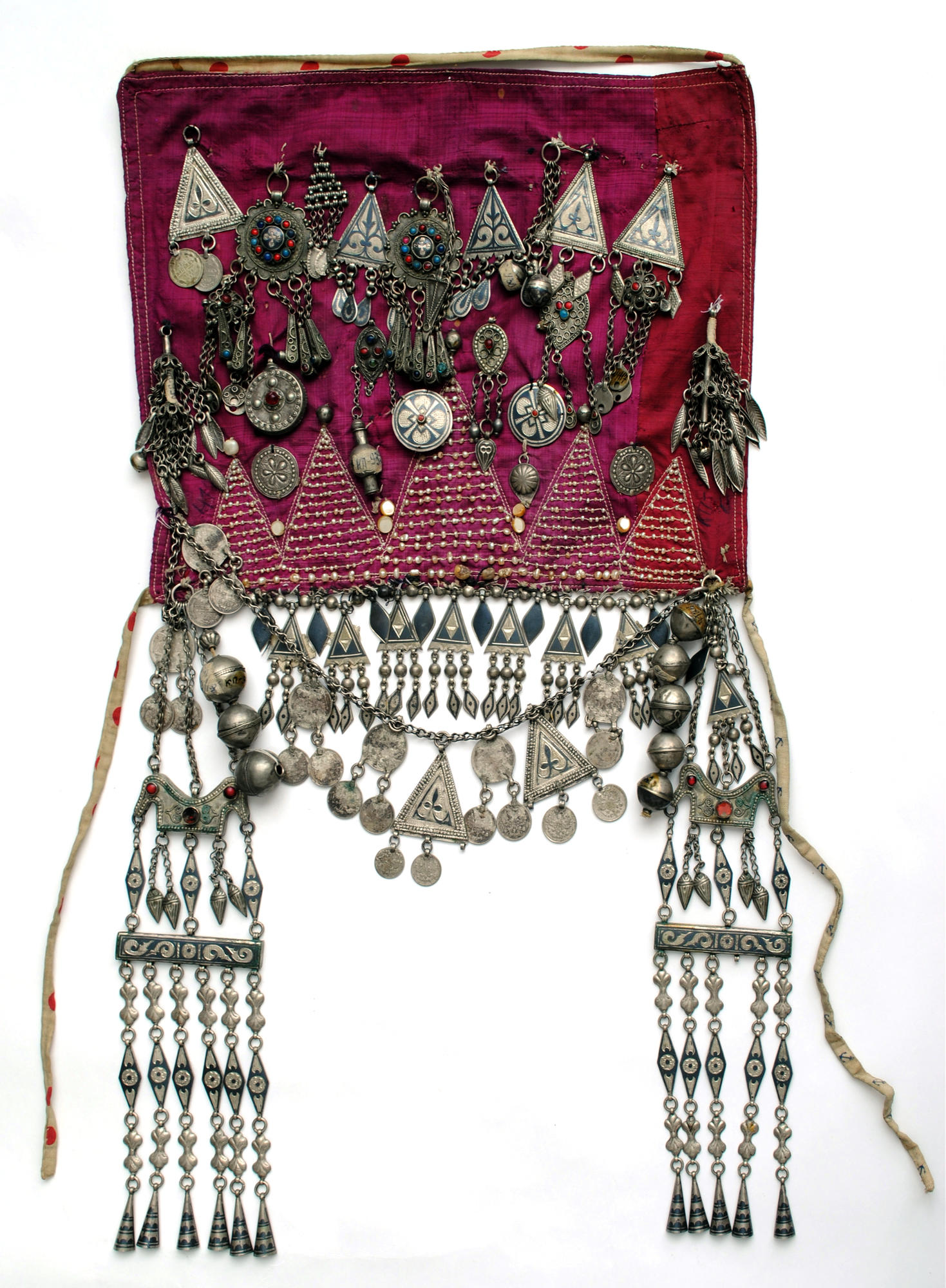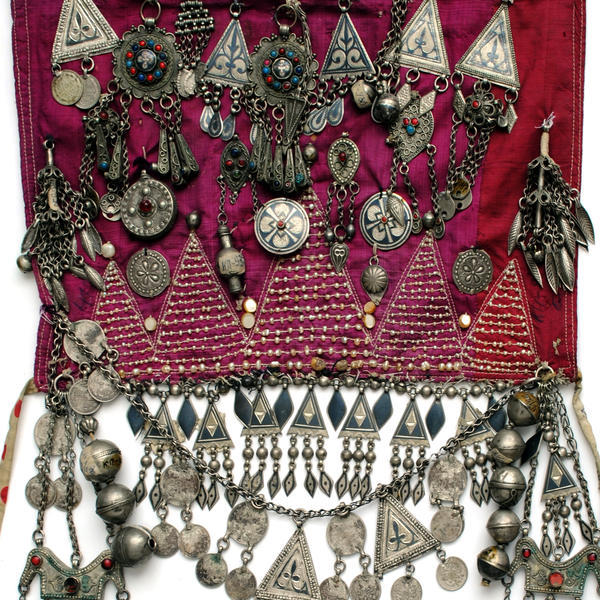The most important component of the wedding attire of a Dagestani bride was decoration. For example, in the village of Rugudzha, a bride on her wedding day would be wearing up to six kilograms of silver. One of the oldest elements of the attire was sew-on jewelry, and marghal (or margal) was one of that. This is a unique Rugudzha artefact, not to be found in any other Dagestani village. It was worn exclusively on the wedding day and was transferred from generation to generation.
Marghal is a piece of expensive cloth (usually silk or brocade) that was fixed at the back of the girl’s head with the help of ribbons. Usually it was of deep burgundy or violet color and performed the function of a protective amulet.
Marghal is a piece of expensive cloth (usually silk or brocade) that was fixed at the back of the girl’s head with the help of ribbons. Usually it was of deep burgundy or violet color and performed the function of a protective amulet.
Traditionally, the bridal attire was supposed to ward off the evil eye. At the moment of the change of her social status, the girl was believed to be most vulnerable to devilry. Therefore, the young woman was accompanied to the bridegroom’s home under the screen of night. The marghal covered her face, and the ring of coins would scare off evil spirits.



